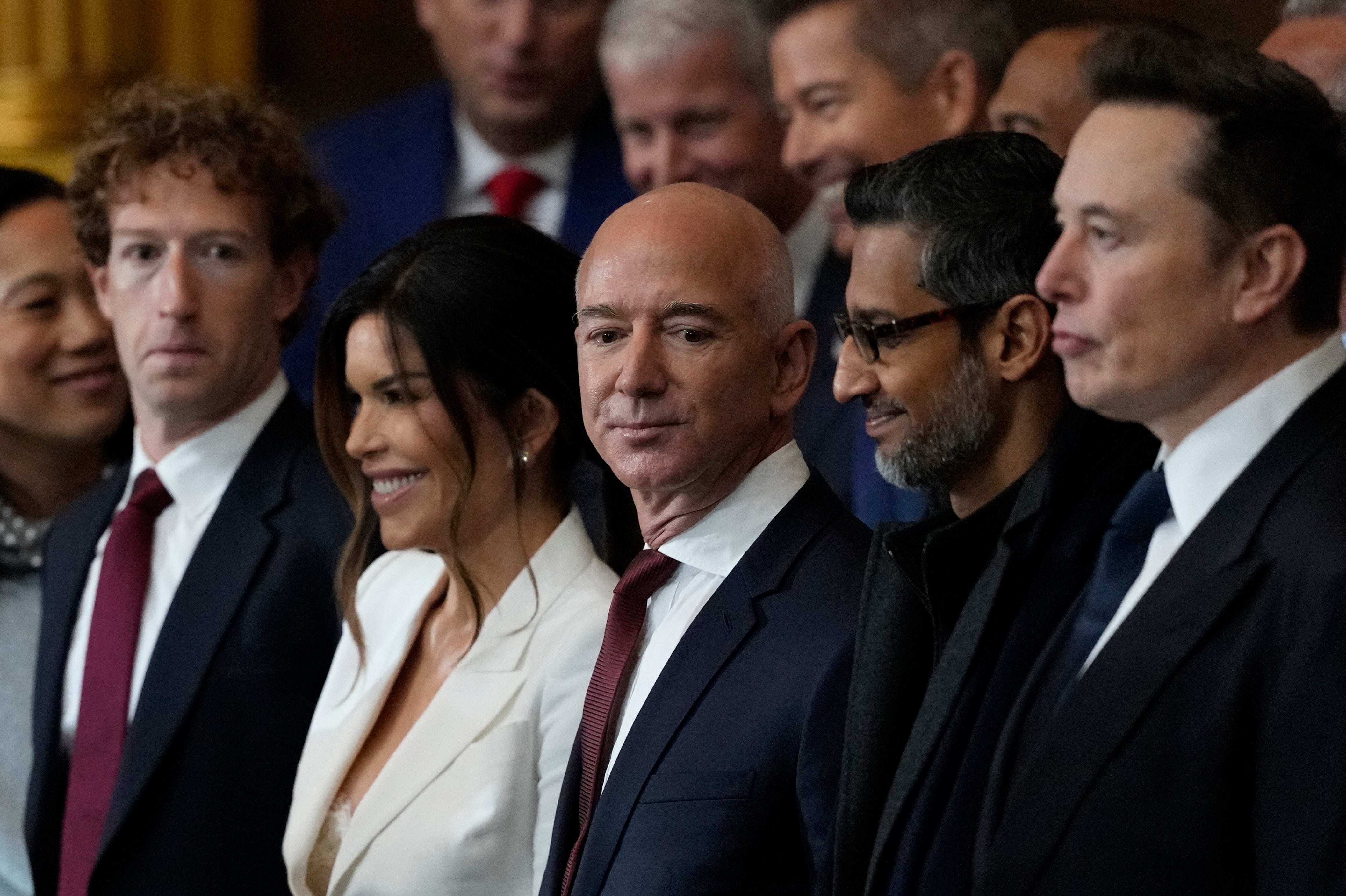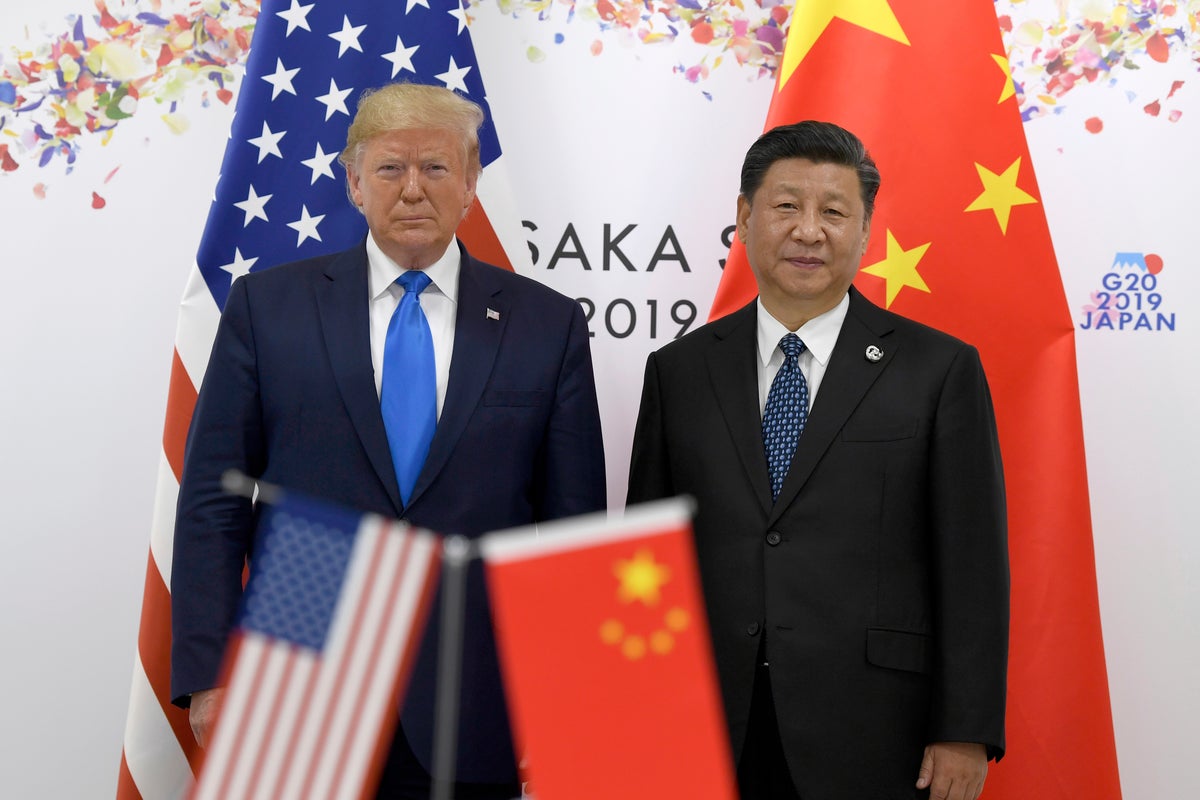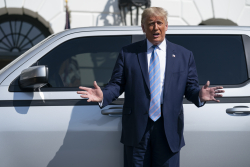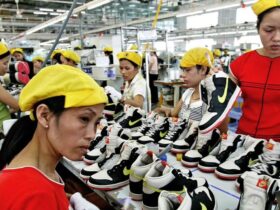Your support helps us to tell the story
From reproductive rights to climate change to Big Tech, The Independent is on the ground when the story is developing. Whether it’s investigating the financials of Elon Musk’s pro-Trump PAC or producing our latest documentary, ‘The A Word’, which shines a light on the American women fighting for reproductive rights, we know how important it is to parse out the facts from the messaging.
At such a critical moment in US history, we need reporters on the ground. Your donation allows us to keep sending journalists to speak to both sides of the story.
The Independent is trusted by Americans across the entire political spectrum. And unlike many other quality news outlets, we choose not to lock Americans out of our reporting and analysis with paywalls. We believe quality journalism should be available to everyone, paid for by those who can afford it.
Your support makes all the difference.
Consumers have been warned to prepare for price hikes and shipping delays as a key trade exemption expires.
Starting Friday, the Trump administration will end a duty-free pass for low-value imports from China, impacting millions of packages arriving daily in the US. This shift will likely ripple through consumer wallets and reshape business strategies.
The termination of the “de minimis” rule, which previously allowed up to 4 million low-value parcels, predominantly from China, to enter the US duty-free each day, marks a significant change in US-China trade dynamics. Consumers should brace for increased prices on everyday goods as businesses grapple with the added import costs. Delivery times could also lengthen as customs processing becomes more complex.
The change is forcing businesses reliant on Chinese manufacturing to reassess their operations. Many built their models on the cost advantages of Chinese production and the duty-free exemption. Now, they face the challenge of absorbing the new tariffs or exploring alternative sourcing options to maintain competitive pricing.
The move, which applies to goods originating from mainland China and Hong Kong, comes on top of President Donald Trump‘s new tariffs totaling 145% on China. Beijing has retaliated with tariffs of 125% on the U.S., fueling a trade war between the world’s two largest economies. Sellers are already seeing cautious consumers.
On Wednesday, Trump called the de minimis exemption “a big scam going on against our country, against really small businesses.”
“We put an end to it,” he said.
What’s the de minimis provision?
Introduced in 1938, the de minimis exception was intended to facilitate the flow of small packages valued at no more than $5, the equivalent of about $109 today. The threshold rose to $800 in 2016. But the rapid rise of cross-border e-commerce, driven by China, has challenged the intent of the decades-old customs exception rule.
Chinese exports of low-value packages soared to $66 billion in 2023, up from $5.3 billion in 2018, according to a February report by the Congressional Research Service. And the U.S. market has been a major destination.
Former President Joe Biden proposed a rule last year that said foreign companies can’t avoid tariffs simply by shipping goods that they claim to be worth $800 or less. Trump tried in February to end the exception but his initial order was called off within days when it appeared the U.S. was not prepared to process and collect tariffs on the deluge of parcels coming in.
Consumers will face higher prices and delivery delays now that parcels will go through a more complicated customs process to enter the U.S. involving declaration and duty payment.
Businesses could factor tariffs into the final price, or they can list them separately in the same way as sales taxes. For instance, Temu, which is owned by the Chinese e-commerce company PDD Holdings, now lists “import charges” that have reportedly doubled many items’ prices. (The retailer also has a “local warehouse” option for some products, which are shipped from within the U.S. and therefore avoids the import charge.)
Meanwhile, Shein, now based in Singapore, has a checkout banner that reads, “Tariffs are included in the price you pay. You’ll never have to pay extra at delivery.”
Amazon says it’s not planning to display added tariff costs next to product prices on its site — despite a report that sparked speculation the e-commerce giant would soon show the new import charges, and the White House has made fiery comments denouncing the purported change.

Parcel carriers will be burdened with collecting duties, and the paperwork to comply with the new rule could result not only in higher prices but also delays and even disruptions to delivery, said Ram Ben Tzion of the vetting platform Publican.
Major commercial carriers such as UPS and FedEx have said they are well-equipped and prepared to collect duties on international parcels in compliance with local laws, including the new U.S. rule.
Commercial carriers will be collecting 145% tariffs on declared values. The U.S. Postal Service, a government agency that offers international mail service, can choose either to charge a 120% tariff on low-value packages or a flat fee of $100 per shipment, which is set to rise to $200 on June 1.
The U.S. Customs and Border Protection says it “stands ready to fully implement the restrictions on de minimis shipments and collect all revenue owed for these shipments on May 2, 2025.”
However, experts have expressed concerns that the surge in the workload could be a serious challenge.
In January and February, more than 70% of the 216 million packages coming into the U.S. were originating from China, according to CBP.
What’s the impact on businesses?
Those that relied on the de minimis exemption are now having to adjust.
John Curry, owner and chief executive officer of HAPARI International, an Arizona-based swimwear business, had switched from bulk shipping to de minimis shipping about six months ago to improve cash flow, speed up delivery, and eventually eliminate U.S.-based warehousing. His company makes its products in China and sells them directly to U.S. customers via its own online storefront.
Curry said he planned to stay the course and pay the additional 145% duty — one parcel at a time — while waiting for the U.S. and China to work out a more sustainable approach.
“There has to be a solution because both countries cannot survive this way,” Curry said.
Izzy Rosenzweig, founder and CEO of the logistic company Portless, helps businesses like HAPARI to ship goods from its China-based warehouse using the de minimis exemption. He says U.S. businesses are likely to stay in China for now given the competitiveness of the manufacturing base and of the supply chain in China but can be expected to raise prices.
And while businesses with good profit margins probably will continue to ship from China, those that run on razor-thin profit margins are likely to “go local”, setting up more U.S.-based warehouses to defray tariff costs, he said.
Who benefits?
Trade groups representing flag manufacturers and bike dealers said they expect to benefit from the end of the duty exemption.
In written comments on the U.S. Trade Representative portal, for instance, the Flag Manufacturers Association of America said its members have been bombarded by an onslaught of American flag imports mostly made in China that are falsely marketed and significantly discounted. The group cited a drop of 25% to 35% in industrywide sales of American-made U.S. flags last year.
Larry Severini, CEO of Embroidery Solutions Manufacturing LLC, which makes the star fields for U.S. flag manufacturers, had to shutter one of his two plants in South Carolina earlier this year because of stiff competition from cheap imports. He noted sales have fallen 20% since 2021 in part because of the de minimis exemption.
“We need duties to level the playing field to make it fair,” Severini said.
The National Bike Dealers’ Association’s Heather Mason said shoppers often check out $2,000 bike from a trusted brand like Trek and then they find a lookalike online for $1,200 — often with lower quality parts, no warranty, no service, and safety risks.
“Reputable brands follow strict safety, labor, and warranty standards,” she said in an email to The Associated Press. “De minimis allowed bad actors to dodge these.”
















Leave a Reply